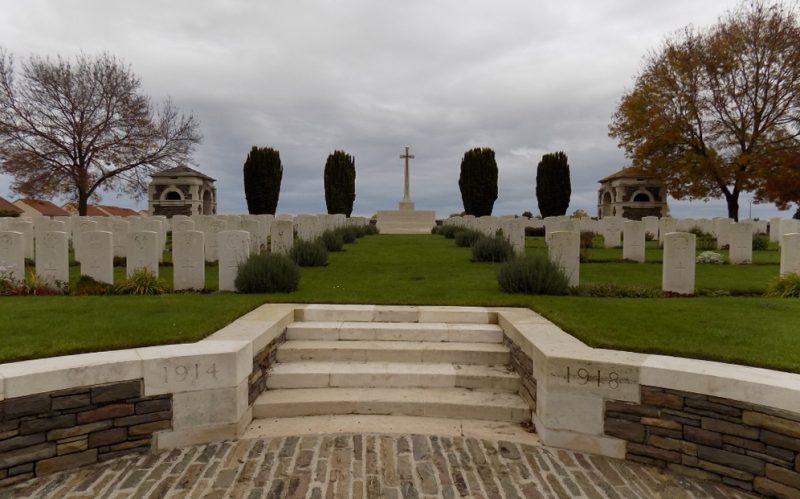How amazing it is that with today’s DNA testing, we can say with absolute certainty that the remains found in a field at Cuinchy, near Arras in France, are those of Lance Corporal John Morrison, a man who died in battle more than 100 years ago.
John Morrison was born in 1885 at Tomintoul, Banffshire, Scotland. He followed in his father’s footsteps, becoming a gamekeeper and worked as such on an estate in Argyll, in the West of Scotland. At the outbreak of WWI, he decided that he would enlist, so traveled to Perth and joined the Black Watch in September of 1914. He soon found himself in the 1st Battalion and serving at Ypres, but just before Christmas, John ’s Battalion, together with others from his division, were sent on to Cuinchy, (North Western France.) Their orders were to support the troops already holding the front, thereby providing much-needed reinforcements. Information had been received that the enemy was soon to make a concerted advance, and this reinforcement was much needed.
Towards the end of January 1915, during fierce fighting, enemy mines were detonated in the sector of the front where the Brickstacks were, which, together with a heavy attack by the enemy, threatened the line held by the Coldstream and the Scots Guards. Morrison’s battalion – together with other reinforcements – were sent in as part of a desperate attempt to stabilize the position, but after hours of bitter fighting, they were finally overwhelmed. The death tally from Morrison’s battalion was dreadful, 59 in all, one of which was that of the 29-year-old Lance Corporal J. Morrison.
A comrade of Morrison told his parents how during the fierce fighting, Morrison had been hit in the leg. Seeing that his officer was also wounded and was struggling to free himself from his pack, Morrison managed to crawl over to assist him, and it was then that he was fatally shot. The officer, 2nd Lieut. Lewis Willet, reported: “I was unable to … see who it was… [but]… I heard he was hit, and asked him if it was so. He replied: ‘Yes Sir’; and when I inquired later, I received no reply, but could just touch his hand by reaching back, and found he was dead … he was one of my most valued men.”
One hundred years later, a chance discovery made by a farmer in Arras, while working in his fields, started a search. The farmer had come across an old spoon upon which the engraved service number – 5181 – was still visible. On further investigation, more artifacts and sufficient remains were uncovered to enable the JCCC (Joint Casualty and Compassionate Centre) of the Ministry of Defence to take things further. They were able to trace John’s family and were thus able to positively identify him using DNA. In this search, they had managed to track down Dr. I. Morrison, John’s 90-year-old nephew and also the 92-year-old Sheila Thomson, John’s cousin. Dr. Morrison was extremely grateful for all the work that had gone into the JCCC’s investigation, and his thanks also went to “the Black Watch in honoring one of their own with a full ceremonial burial.”
Lance Corporal John Morrison was finally laid to rest on July 27th, 2016. He was buried at Woburn Abbey Cemetery in Cuinchy, with full military honors, more than 100 years after his death. The ceremony was led by Rev. Mackay, (Chaplain of a Battalion of The Black Watch.) Soldiers of the Royal Regiment of Scotland bore the coffin, fired the salute, and played the pipes. Although Dr. Morrison was unable to attend, two great-nieces and a great-nephew of Lance Corporal John Morrison were there to pay tribute to him.
Morrison had been commemorated on the Le Touret Memorial, together with the 53 other comrades who have no known graves and were also killed in action on the same day. Now, however, Morrison has his own, new headstone, bearing his name, which was provided by the Commonwealth War Graves Commission. The Commission will take responsibility for the care of this final resting place, in perpetuity.
